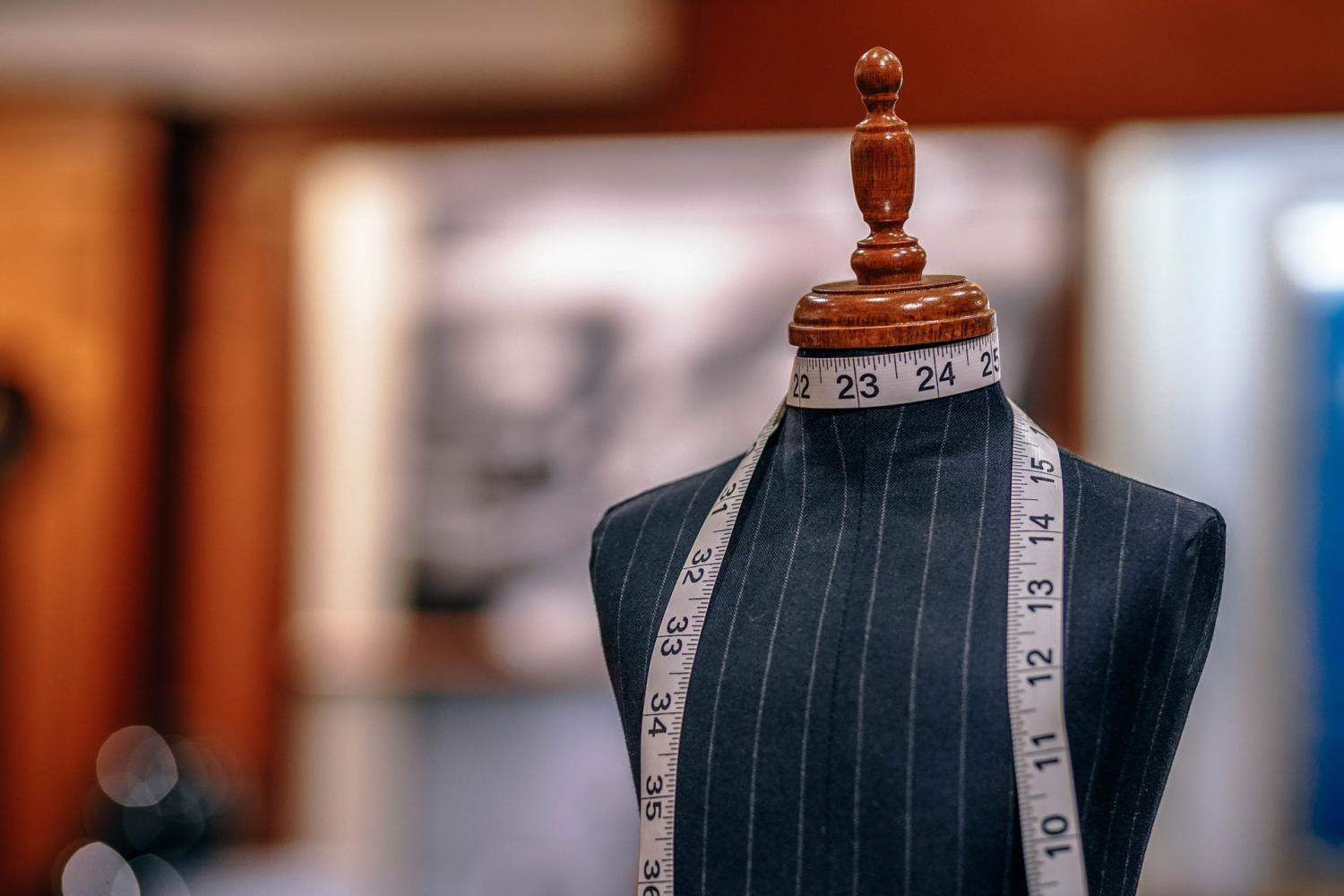
The fashion business is close to being a $2 trillion industry globally, and with a growing population predicted to reach 9 billion people by 2050, demand for apparel is going to only grow as we head into the future.
The strain on resources to meet burgeoning demand has smart businesses in the industry taking a long-term view as to how the fashion landscape will be forced to change, since those constraints are almost certainly going to disrupt the business-as-usual model we have today, which is often of an industry built around a cheap and disposable product.
So how will peering into the future drive the industry to adapt to growing resource constraints, and how will this impact the design process to make the fashion industry more sustainable? Furthermore, how will the next generation of fashion designers respond, and drive the industry to meet the challenge?
In order to prepare for the future, you have to have some sense of what to expect even if it's not possible to predict precisely how it will unfold. Initiatives like Fashion Futures, a joint project undertaken in recent years by Forum for the Future and Levi Strauss & Co., looked ahead to 2025 and envisioned four different plausible scenarios for the industry.
Scenario planning is a useful tool companies can use to help "future-proof" their business by allowing them to be in a position to plan and adapt to a number of different possibilities. In the case of Fashion Futures, scenarios range, for example, from an industry organized around local communities and short supply chains, on the one hand, to one organized around a highly collaborative global industry with established standards, on the other.
But in each scenario, the project revealed five key lessons, all of which are organized around change for the industry. A successful company will need to:
- Prepare now for a radically different and uncertain future
- Seize the opportunity to be a trailblazer
- Put change into practice
- Look out for unexpected competition
- Develop skills for a new world.
Most importantly, the project determined that, "The scenarios demonstrate the urgent commercial imperative for the industry and the businesses within it, to rise to the challenge of the future and become more sustainable." So no matter what, the fashion industry is in the throes of a paradigm shift.
We interviewed Desirae Early, Levi Strauss & Co. manager of Sustainability Strategy and Innovation, to discuss resource constraints facing the fashion industry, and to learn how design and innovation can address the most pressing problems.
Fashion and resource constraints
In the Sustainably Attired series on Triple Pundit, we have already described the importance of cotton to the fashion industry and how it places great demands on the environment, in terms of water use. LS&Co.'s Early noted that in some places in the world, water is already a critical constraint, and that cotton crop yields fluctuate dramatically with changes in weather patterns -- having a material effect on raw material prices.
Other key constraints Early identified are fossil fuel-based energy sources. The effects here, she explains, are the negative impacts of unchecked CO2 emissions which will trigger large-scale economic, social and environmental consequences for their business and the communities in which they operate. But those environmental factors aside, oil scarcity and higher prices will directly impact raw material creation, since polyester -- which in combination with cotton, represent the two most important fibers used in the fashion industry -- is an oil derived product.
Another constraint is the opportunity cost of agricultural land. If more land is given over for growing food crops or producing biofuels instead of producing textile fibers, it will place another constraint on the supply chain for the fashion industry.
The impacts of both fossil fuels and water use are largely felt in the raw material supply chain in the creation of fabrics, before a garment or a piece of footwear is created. Research conducted by Nike found that growing cotton, harvesting rubber, raising livestock for leather and extracting oil for polyester -- coupled with materials processing activities such as the dyeing and finishing of fabrics -- accounts for 54 percent of total energy use, 83 percent of water consumption and 56 percent of GHG emissions in producing apparel.
This means that as raw material inputs rise to meet growing demand, it will no longer be economically viable to sell cheap clothing. LS&Co.'s Early told us that water and energy prices are increasing in many parts of the world where production occurs, necessitating that only, "by decreasing the water inputs and transitioning to materials that use less water and energy in production, we can make clothing with a lower environmental impact at a better long term price."
Addressing these considerable inputs, and in order to mitigate the impact, Levi's became a "pioneer member" of the Better Cotton Initiative, which is working to reduce inputs of water, as well as pesticides and focuses on making global cotton production better for the people who produce it. As Early told us:
"We must decouple the growth of our business and our water needs if we want to continue leading into the future."
However, even beyond the creation of fabrics, there is still considerable water use in the garment manufacturing process too. Levi's has also addressed efficiency in this realm, by efforts in Levi’s® Water<Less™ program. Here, the company has significantly reduced the amount of water used to make its products, such as removing water from the stone-washing process and moving away from multiple wet-cycle processes. These efforts have saved the company more than 770 million liters of water in the production of over 62 million garments.
Embracing sustainable design
Product design itself is integral to the fashion industry in avoiding the impact of material resource constraints. To help quantify 'sustainability' in product design, the Sustainable Apparel Coalition, whose current membership includes many household brands such as LS&Co., Nike, Patagonia, and Gap among many others, developed the Higg Index. Based on three modules (facility, brand and products), this sustainability self-assessment tool aims to asses current performance and drive behavior for improvement.
The Higg Index includes a beta tool in the product module to help designers understand the impact of products they are designing. Known as the Rapid Design Module (RDM), it aims to educate and provide quick directional guidance to apparel and footwear designers during the product creation process concerning the potential environmental impacts of their design solutions, while incorporating a product lifecycle approach.
"We think that standards, like the Higg Index, are extremely important to changing the apparel industry," Early told us. "We have used it benchmark our own brands and are working with the Sustainable Apparel Coalition to expand usage and coverage with the index."
Early also explained that in the design process, there is plenty of opportunity to make clothing longer lasting and more easily recyclable. For example, LS&Co.'s Dockers® Wellthread™ collection – a small collection launched in 2013 – uses an innovative new long-staple yarn designed to hold up through the recycling process without sacrificing the strength of the cloth. Additionally, the company's Waste<Less collection incorporates recycled water bottles, while they have a small range of jackets made from re-purposed military parachutes.
Other companies like Nike, are also designing products with recycled materials. Brazil's world cup soccer team will be wearing shirts made from recycled polyester fibers for example, while outdoor clothing specialist Patagonia has a range of fleece's that are made from 80 percent recycled material.
Better use of raw materials and water, increased use of recycled fibers, and designing clothes that are easy to recycle at end-of-life, are all elements of smart design that the fashion industry is increasingly paying attention to; and the importance of training the next generation of designers to incorporate these elements of sustainability into clothing design is paramount, Early says.
So, as well as developing innovative materials and processes, LS&Co. is leading an effort in the education process too. Two years ago, the company began a relationship with the Rhode Island School of Design with the goal to incorporate more sustainable practices in fashion design.
"This past winter, our relationship expanded to create a Designer in Residence program at RISD, so that members of Levi Strauss could work with up-and-coming talent on new, innovative ways to approach design processes and creation methods, while keeping sustainability a priority," Early says. "We believe that by working with designers early on to learn about and promote environmentally friendly practices, they will then incorporate those lessons further into their careers."
Image credit: Pexels

Phil Covington holds an MBA in Sustainable Management from Presidio Graduate School. In the past, he spent 16 years in the freight transportation and logistics industry. Today, Phil's writing focuses on transportation, forestry, technology and matters of sustainability in business.














